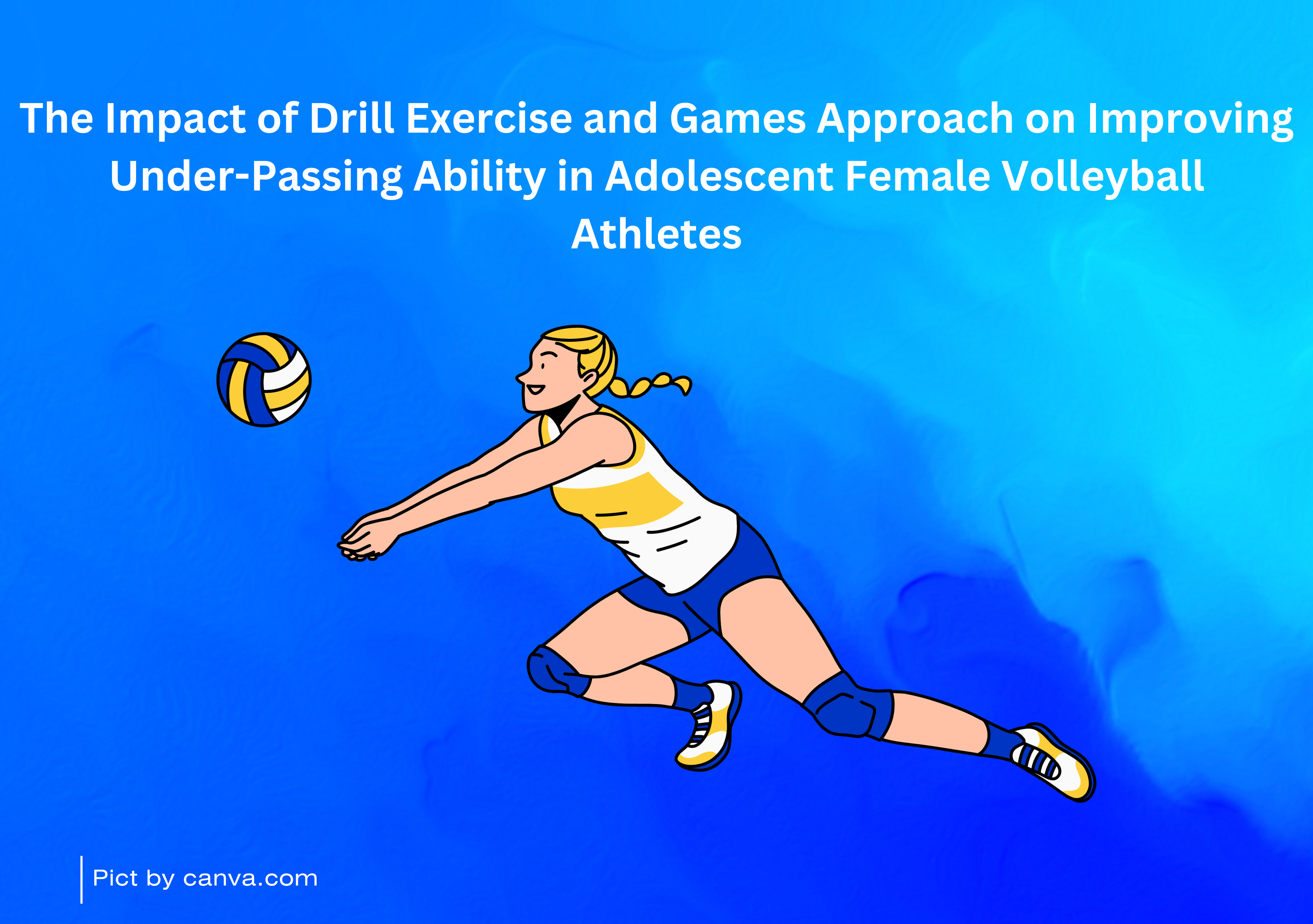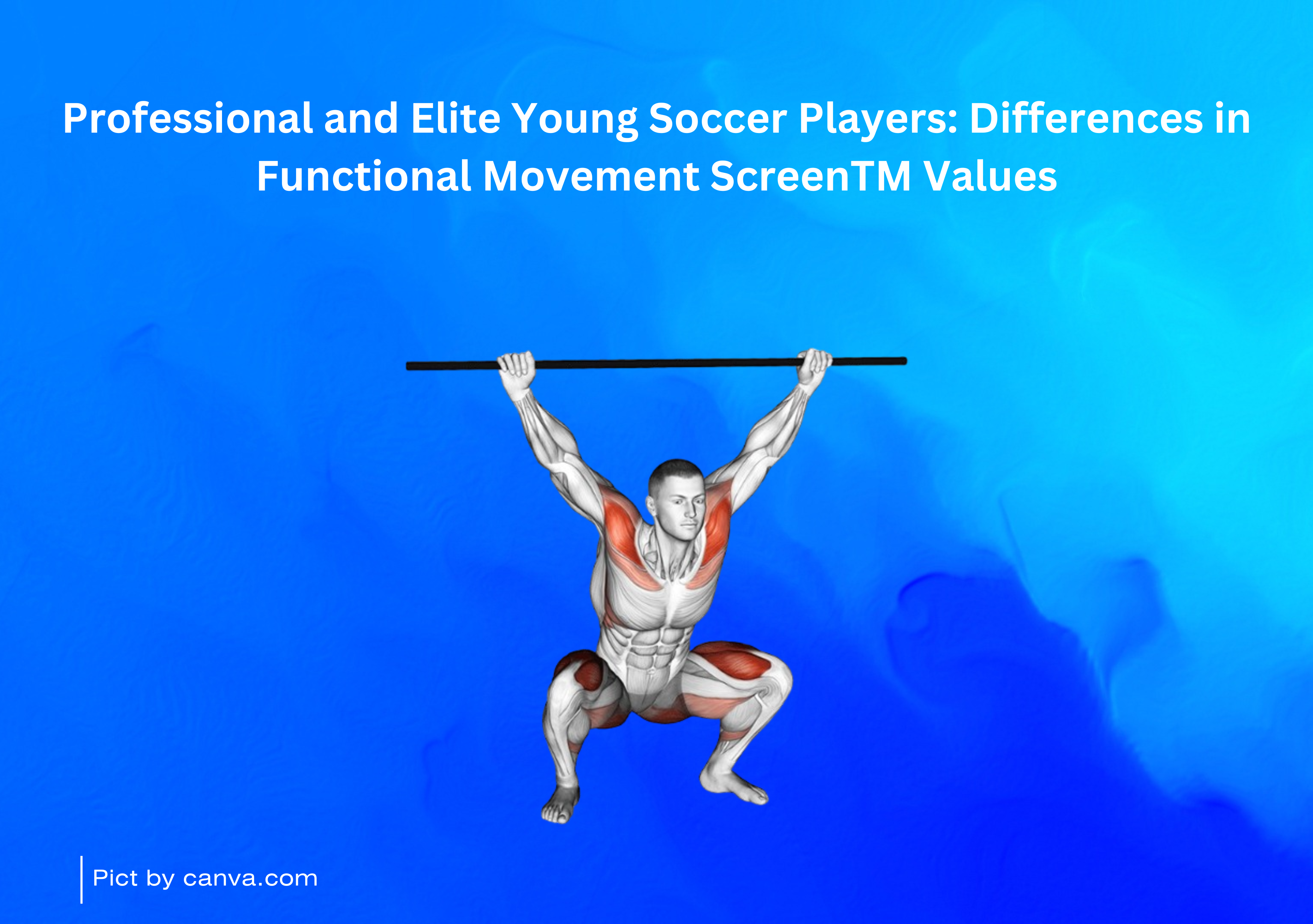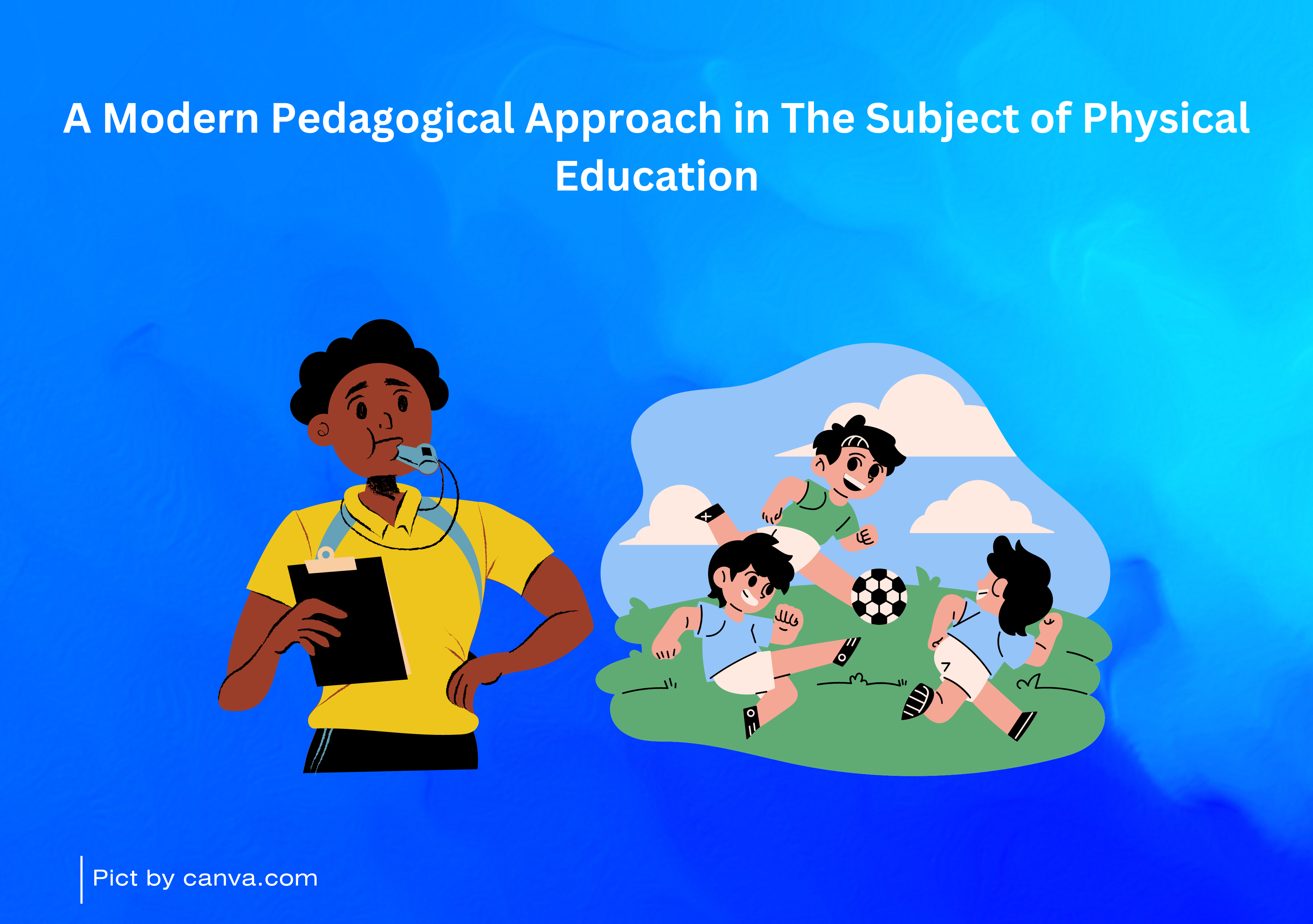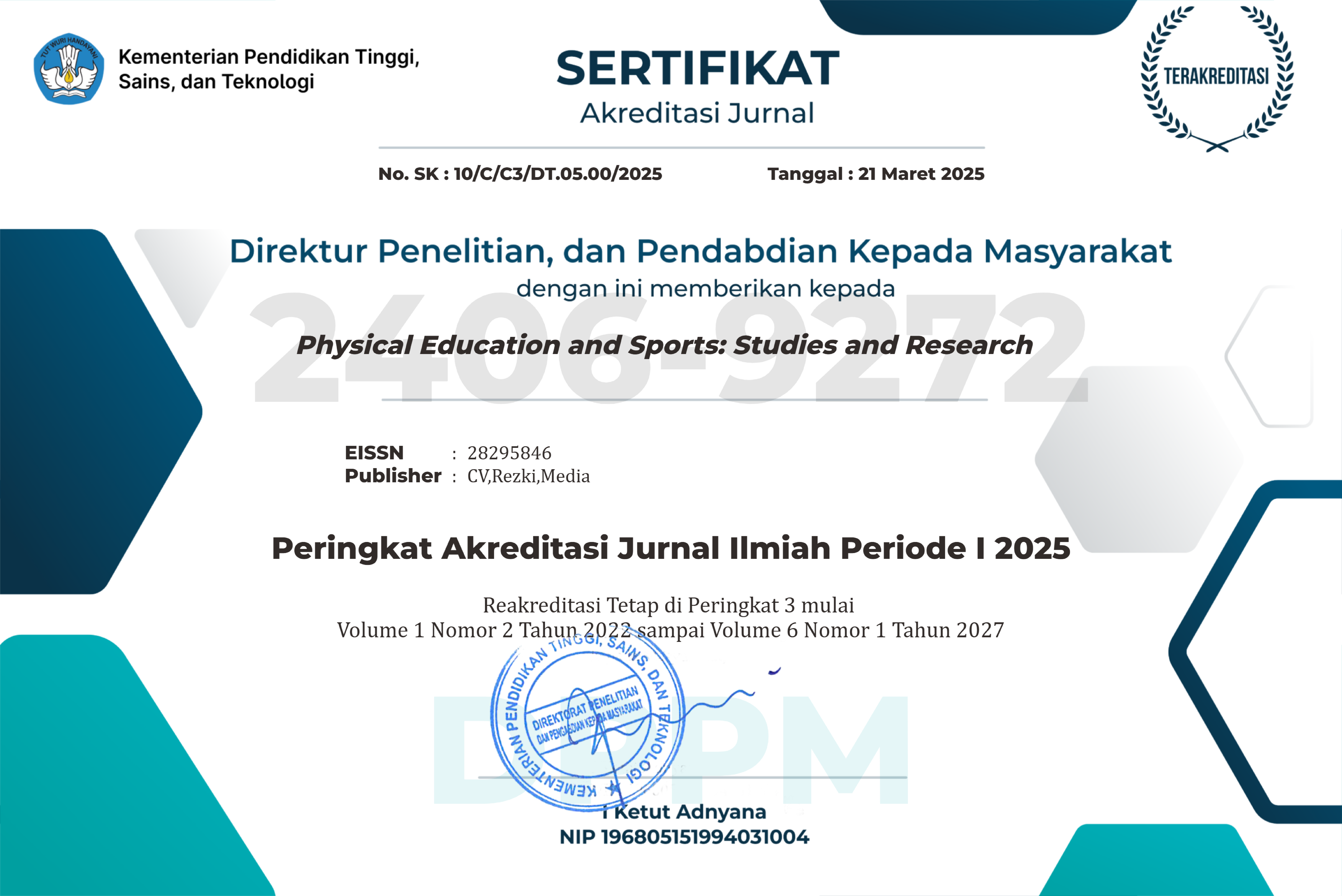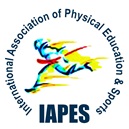Predictors of cardiorespiratory endurance in martial arts athletes: A path analysis of body composition, hemoglobin, and motivation
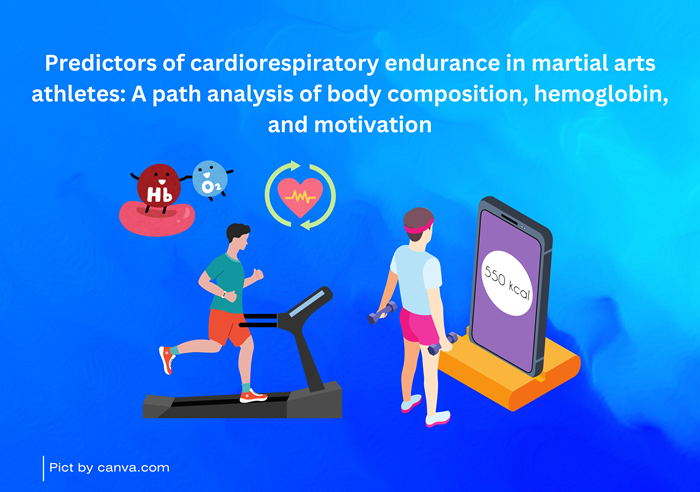
Downloads
Background: Cardiorespiratory endurance is vital to athletic performance, particularly in sports requiring sustained physical exertion such as martial arts.
Objectives: This study examined the predictive roles of body composition (BMI), hemoglobin concentration, and motivation on cardiorespiratory endurance among university-level martial arts athletes.
Methods: Using a quantitative path analysis design, data were collected from 20 purposively selected martial arts athletes who regularly trained. Cardiorespiratory endurance was assessed via the multistage fitness test, BMI was calculated using standard anthropometric measures, hemoglobin was measured using the Harenz scale, and motivation was evaluated with a validated Likert-scale questionnaire.
Results: The analysis showed that BMI (ρ = 0.705, t = 3.071, p = 0.007) and hemoglobin concentration (ρ = 0.946, t = 4.672, p < 0.001) had significant positive effects on cardiorespiratory endurance. Motivation, however, did not have a significant direct effect (ρ = 0.087, t = 0.853, p = 0.203). Additionally, BMI correlated positively with both hemoglobin (ρ = 0.923, p < 0.001) and motivation (ρ = 0.670, p = 0.034), suggesting indirect effects through physiological mechanisms.
Conclusions: The findings underscore that physiological indicators, specifically BMI and hemoglobin, are more critical predictors of aerobic capacity than psychological factors like motivation in this athletic population. Due to sport-specific demands, these results may not be generalizable to non-martial arts athletes. Future studies should incorporate additional mediators such as training intensity and account for potential self-report bias in motivation assessments.
Aftab, A., Rafique, N., Basharat, S., Sultana, B., Abid, F., & Rafique, A. (2022). Motivational factors associated with sports participation among athletes. The Rehabilitation Journal, 6(02), 320-325. https://doi.org/10.52567/trj.v6i02.61
Ahlgrim, C., Pottgiesser, T., J, K., Duerr, H., Baumstark, M. W., & Schumacher, Y. O. (2009). Relations between haemoglobin mass, cardiac dimensions and aerobic capacity in endurance trained cyclists. Journal of Sports Medicine and Physical Fitness, 49(4), 364–371. https://www.ncbi.nlm.nih.gov/pubmed/20087295
Astuti, N., Faridah, F., Fatimawati, I., & Kertapati, Y. (2019). Relationship of body mass index and haemoglobin with cardiorespiration endurane in female college students. Jurnal Midpro, 12(2), 206. https://doi.org/10.30736/md.v12i2.241
Bonney, E., Ferguson, G., & Smits-Engelsman, B. (2018). Relationship between body mass index, cardiorespiratory and musculoskeletal fitness among south african adolescent girls. International Journal of Environmental Research and Public Health, 15(6), 1087. https://doi.org/10.3390/ijerph15061087
Castro-Sánchez, M., Zurita-Ortega, F., García-Mármol, E., & Cuberos, R. (2019). Motivational climate towards the practice of physical activity, self-concept, and healthy factors in the school environment. Sustainability, 11(4), 999. https://doi.org/10.3390/su11040999
Chen, P., Chen, W., Wang, C., Yang, H., Huang, W., & Huang, H. (2020). Association of physical fitness performance tests and anthropometric indices in taiwanese adults. Frontiers in Physiology, 11. https://doi.org/10.3389/fphys.2020.583692
Dewi, M., Kustiyah, L., & Kuswari, M. (2015). Percent fat mass and body mass index as cardiorespiratory fitness predictors in young adults. Jurnal Gizi dan Pangan, 10(3). https://doi.org/10.25182/jgp.2015.10.3.%25p
Dharma, I., Jaya, I., & Prianthara, I. (2021). The correlation of body mass index and physical activity on cardiorespiratory endurancbe among elderly. Physical Therapy Journal of Indonesia, 2(2), 30-35. https://doi.org/10.51559/ptji.v2i2.30
Domínguez, R., Cuenca, E., Maté-Muñoz, J., García-Fernández, P., Serra-Payá, N., Lozano-Estevan, M., … & Garnacho-Castaño, M. (2017). Effects of beetroot juice supplementation on cardiorespiratory endurance in athletes. a systematic review. Nutrients, 9(1), 43. https://doi.org/10.3390/nu9010043
Eddolls, W., McNarry, M., Lester, L., Winn, C., Stratton, G., & Mackintosh, K. (2018). The association between physical activity, fitness and body mass index on mental well-being and quality of life in adolescents. Quality of Life Research, 27(9), 2313-2320. https://doi.org/10.1007/s11136-018-1915-3
Feng, Y. (2023). Influence of abdominal core strengthening on flexibility in kung fu athletes. Revista Brasileira De Medicina Do Esporte, 29. https://doi.org/10.1590/1517-8692202329012022_0360
Firdausi, D. K. A., & Simbolon, M. E. M. (2018, December). The association between body mass index (BMI), leg power, speed, and cardiorespiratory fitness (CRF) among adolescents. In 2nd Yogyakarta International Seminar on Health, Physical Education, and Sport Science (YISHPESS 2018) and 1st Conference on Interdisciplinary Approach in Sports (CoIS 2018) (pp. 1-3). Atlantis Press. https://doi.org/10.2991/yishpess-cois-18.2018.1
Heryanti Octavia, N. A., Ichwan, M., & Eyanoer, P. C. (2018). Correlation between Hemoglobin Levels and Muscular Endurance in Soccer Athletes. Indonesian Journal of Medicine, 3(3), 168-172. https://doi.org/10.26911/theijmed.2018.3.3.144
Kaap‐Deeder, J., Vansteenkiste, M., Soenens, B., Verstuyf, J., Boone, L., & Smets, J. (2014). Fostering self‐endorsed motivation to change in patients with an eating disorder: the role of perceived autonomy support and psychological need satisfaction. International Journal of Eating Disorders, 47(6), 585-600. https://doi.org/10.1002/eat.22266
Karlsson, P., Strand, R., Kullberg, J., Michaëlsson, K., Åhlström, H., Lind, L., & Malinovschi, A. (2024). A detailed analysis of body composition in relation to cardiopulmonary exercise test indices. Dental Science Reports, 14(1). https://doi.org/10.1038/s41598-024-72973-0
Leoprayogo, B., Venna, V., Haryono, I. R., & Tjhay, F. (2020). Correlation between Hemoglobin Concentration and Cardiorespiratory Fitness in Adolescent Sportsmen. Althea Medical Journal, 7(2), 61–64. https://doi.org/10.15850/AMJ.V7N2.1847
Li, J. and Du, X. (2023). Core training in martial arts athletes. Revista Brasileira De Medicina Do Esporte, 29. https://doi.org/10.1590/1517-8692202329012022_0376
Maciejczyk, M., Wiecek, M., Szymura, J., Szygula, Z., Wiecha, S., & Cempla, J. (2014). The Influence of Increased Body Fat or Lean Body Mass on Aerobic Performance. PLOS ONE, 9(4). https://doi.org/10.1371/JOURNAL.PONE.009579
Manouchehri, J., Tojari, F., & Soltanabadi, S. (2015). Validity and Reliability of Measurement Instrument for Sport MotivationScale in Professional Athletes in Team Sports of Iran. Journal of Psychiatry, 18(2), 1–4. https://doi.org/10.4172/PSYCHIATRY.1000253
Mardiana, M., Budiono, I., Lestari, Y. N., & Prameswari, G. N. (2019, November). Relationship of energy and nutrient intakes on nutritional status of young athletes in Semarang. In 5th International Conference on Physical Education, Sport, and Health (ACPES 19) (pp. 305-309). Atlantis Press. https://doi.org/10.2991/acpes-19.2019.69
McHugh, M. (2017). Investigating the relationship between motivation and performance in collegiate rowers. Journal of Sport Psychology Research, 10(2), 123–134.
Mohamad Shalan, N. A. A., Baki, M. H., Ahmad Zahudi, A. Z., Mustafa, M. A., & Abdul Rahim, N. (2024). The influence of body composition on cardiorespiratory performance, energy substrate utilisation and running gait pattern of university rugby players. Malaysian Journal of Movement Health & Exercise, 13(2), 112–118. https://doi.org/10.4103/mohe.mohe_23_24
Nalbant, Ö., & Özer, K. (2018). Evaluation of the relationship between body composition and aerobic fitness in youth soccer players. Physical Education of Students, 22(5), 258–264. https://doi.org/10.15561/20755279.2018.0505
Ortiz de Anda Martín, I., Muñoz‐Pérez, I., Borrajo Mena, E., & Paniagua, A. (2024). Impacto de los factores psicológicos y fisiológicos en la predicción del rendimiento en resistencia (Impact of psychological and physiological factors on endurance performance prediction). Retos: Nuevas Tendencias En Educación Física, Deportes y Recreación, 61, 774–784. https://doi.org/10.47197/retos.v61.106874
Osipov, A., Nagovitsyn, R., Zekrin, F., Vladimirovna, F., Zubkov, D., & Zhavner, T. (2019). Crossfit training impact on the level of special physical fitness of young athletes practicing judo. Sport Mont, 17(3). https://doi.org/10.26773/smj.191014
Perry, J. L., Nicholls, A. R., & Clough, P. J. (2017). Assessing the effectiveness of self-report motivation measures in athletic populations. Psychology of Sport and Exercise, 28, 123–132. https://doi.org/10.1016/j.psychsport.2016.11.004
Pfeifer, C., Sacko, R., Ortaglia, A., Monsma, E., Beattie, P., Goins, J., … & Stodden, D. (2019). Fit to play? health-related fitness levels of youth athletes: a pilot study. The Journal of Strength and Conditioning Research, 36(1), 245-251. https://doi.org/10.1519/jsc.0000000000003430
Qhuzairi, M., Yusof, A., & Wahab, N. A. (2023). Physical activity and cardiorespiratory endurance: A correlational study among university athletes. Journal of Human Performance, 11(1), 45–52.
Resubun, D., Melaniani, S., Nugraheni, N., & Subadi, I. (2022). Relationship between body mass index, type of weight bearing activity and beighton and horan joint mobility index with pes planus in adult athletes. International Journal of Research Publications, 94(1). https://doi.org/10.47119/ijrp100941220222809
Reuter, M., Bopp, M., & Hartmann, S. (2024). The role of training intensity on endurance adaptation in collegiate athletes. International Journal of Sports Physiology and Performance, 19(3), 290–298. https://doi.org/10.1123/ijspp.2023-0198
Röthlin, P. (2022). Achievement motivation and endurance performance in young athletes: The mediating role of perseverance. Journal of Applied Sport Psychology, 34(4), 421–435. https://doi.org/10.1080/10413200.2021.1952703
Sadia, H. (2022). Effects of nutritional intervention on immune function of martial arts athletes. International Journal of Sports Technology, 3(4). https://doi.org/10.38007/ijst.2022.030404
Saltin, B., Kiens, B., Savard, G., & Pedersen, P. K. (1986). Role of hemoglobin and capillarization for oxygen delivery and extraction in muscular exercise. Acta Physiologica Scandinavica, 556, 21–32. https://www.ncbi.nlm.nih.gov/pubmed/3471054
Setyawati, H., Sumekto, D. R., & Rozi, F. (2019, November). Identifying Factors Influencing the Martial Arts Athletes’ Performance. In 5th International Conference on Physical Education, Sport, and Health (ACPES 19) (pp. 59-65). Atlantis Press. https://doi.org/10.2991/acpes-19.2019.13
Shah, R., Wilson, R., Tang, Y., Dong, X., Murray, A., & Bennett, D. (2008). Relation of hemoglobin to level of cognitive function in older persons. Neuroepidemiology, 32(1), 40-46. https://doi.org/10.1159/000170905
Someya, Y., Kawai, S., Kohmura, Y., Aoki, K., & Daida, H. (2014). Cardiorespiratory fitness and the incidence of type 2 diabetes: a cohort study of japanese male athletes. BMC Public Health, 14(1). https://doi.org/10.1186/1471-2458-14-493
Usharani, G. (2017). Comparative study of cardiorespiratory endurance among physical education students. International Journal of Physical Education and Sports Studies, 4(2), 33–38.
Utami, F. R., & Amani, P. (2023). Correlation Between Hemoglobin Level and Functional Capacity in Young Adult Population. Biomedical Journal of Indonesia, 9(1), 19-22. https://doi.org/10.32539/bji.v9i1.160
Vargas, V. Z., de Lira, C. A., Vancini, R. L., Rayes, A. B., & Andrade, M. S. (2018). Fat mass is negatively associated with the physiological ability of tissue to consume oxygen. Motriz: Revista de Educação Física, 24, e101808. https://doi.org/10.6084/m9.figshare.7390799
Vostrikova, A., Pechenkina, V., Danilova, M., Boronnikova, S., & Kalendar, R. (2022). Gene polymorphism and total genetic score in martial arts athletes with different athletic qualifications. Genes, 13(9), 1677. https://doi.org/10.3390/genes13091677
Vyas, A. J., & Khanvilkar, N. P. (2024). Role of Sports Psychology in Context to Development of Sports Performance. International Journal for Multidisciplinary Research, 6(3), 1-12. https://doi.org/10.36948/ijfmr.2024.v06i03.21849
Webb, K. L., Gorman, E. K., Morkeberg, O. H., Klassen, S. A., Regimbal, R. J., Wiggins, C. C., Joyner, M. J., Hammer, S. M., & Senefeld, J. W. (2023). The relationship between hemoglobin and V˙O2max: A systematic review and meta-analysis. PLOS ONE, 18(10), e0292835. https://doi.org/10.1371/journal.pone.0292835
Copyright (c) 2025 Novanto Ponco Nugroho , Dani Nur Riyadi, Aridhotul Haqiyah

This work is licensed under a Creative Commons Attribution-ShareAlike 4.0 International License.




